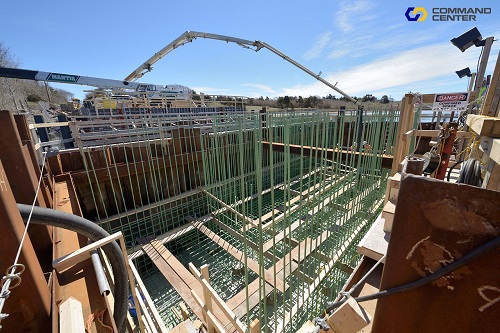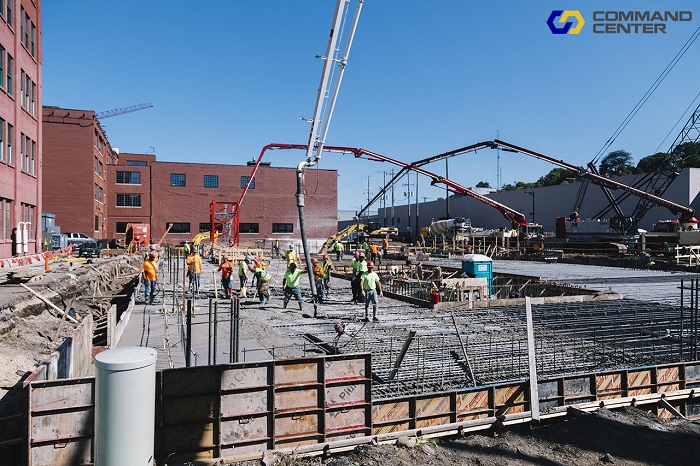 Friday, July 26, 2024
Friday, July 26, 2024  Friday, July 26, 2024
Friday, July 26, 2024 
In cold weather, construction teams should take extra precautions to ensure concrete has reached sufficient strength before applying any loads, such as traffic, pedestrians, or additional construction equipment.

To reduce the risk of concrete damage in cold weather, use the COMMAND Center maturity monitoring system to estimate when in-place concrete has achieved sufficient strength.
Placing concrete in cold weather can be a challenge. The rate at which concrete gains strength decreases in cold weather and can be stunted if it freezes. In cold weather, construction teams should take extra precautions to ensure concrete has reached sufficient strength before applying any loads, such as traffic, pedestrians, or additional construction equipment. Loading early-age concrete too soon can damage it.
Without maturity, determining when concrete has gained enough strength in cold weather can be difficult. Contractors will often rely on mix designs that have previously performed well in cold weather, but even slight changes in available materials can eliminate or reduce the effectiveness of this method.
Instead, contractors can use maturity monitoring to reliably estimate their in-place concrete’s strength based on measured data at the job site. By embedding COMMAND Center sensors in the concrete after placement, concrete strength can be estimated from the internal temperature history of the actual project’s concrete.
Keep Reading on CommandCenterConcrete.com and learn more about Benefits of Concrete Maturity